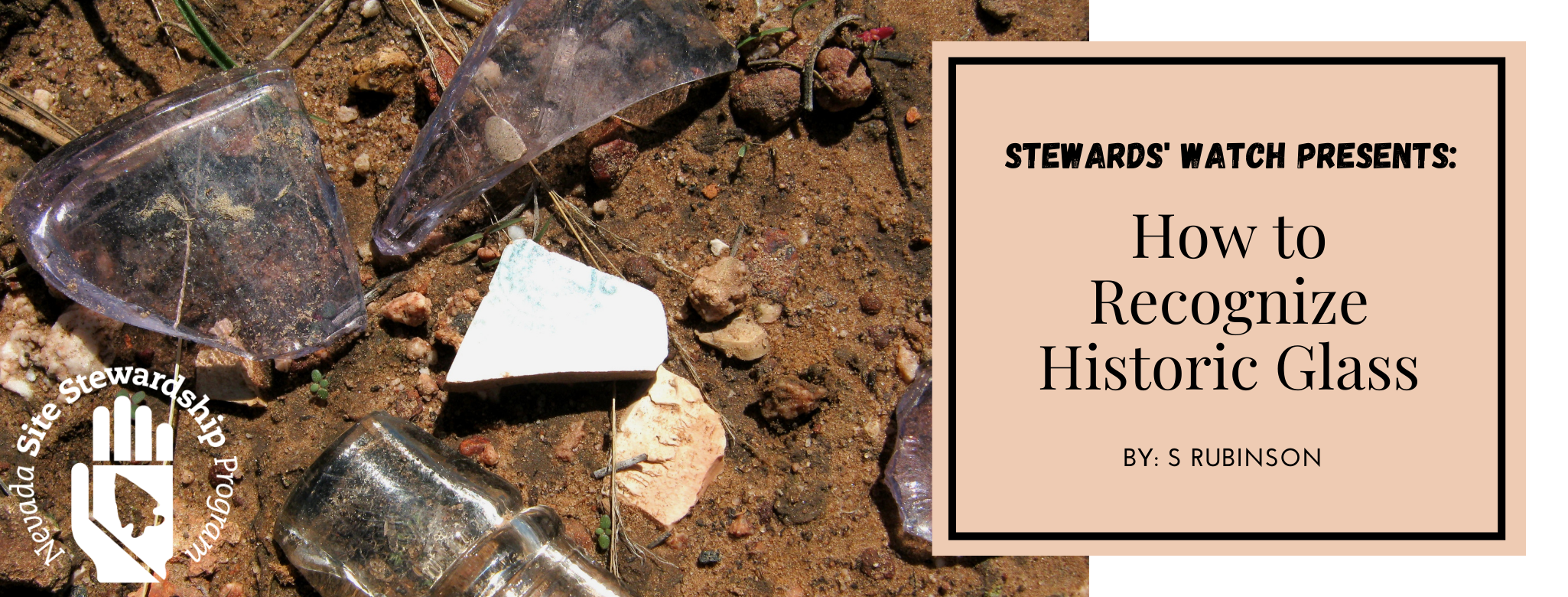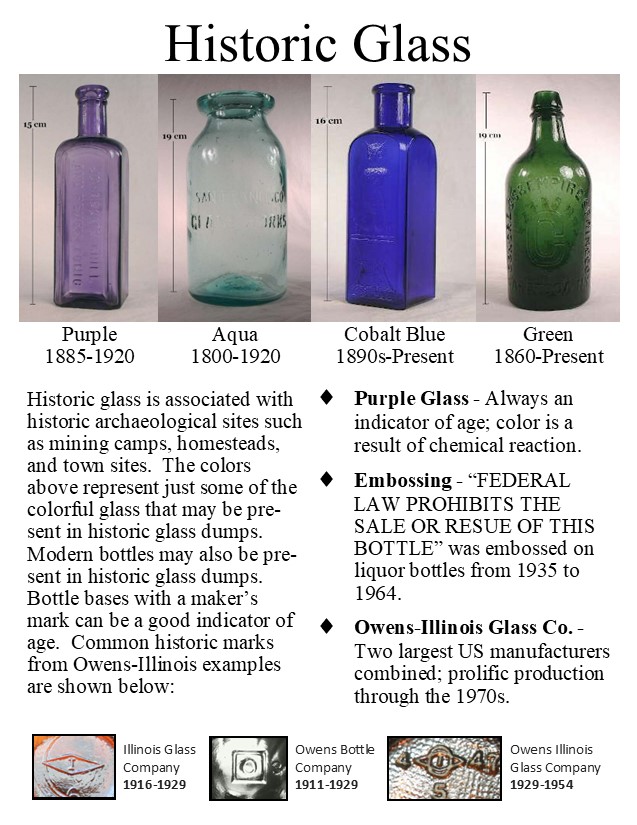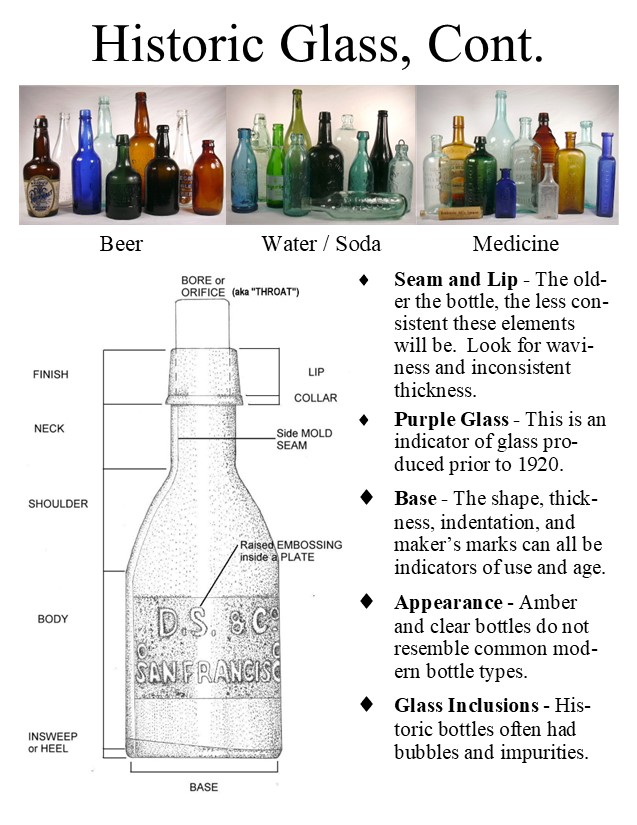How to Recognize Historic Trash - Part 2: Glass

Please Note: The following information only assists site stewards in identifying the artifacts at their sites. Please remember that federal and state laws protect all artifacts (50 years or older) on public lands and it is best to not collect anything unless directed by the land manager.
Historic trash tells can tell us a lot about a site including what the inhabitants ate, drank, smoked, took as medicine, used as fuel, and if it was a temporary site or long-term habitation.
You can generally tell historic trash from modern trash by looking for key indicators such as corrosion, discoloration, and how the object was constructed. Some common examples are iron corrosion on the cans, how cans are opened, opalescence on the bottles, and glass color.
In this post we will focus on identifying historic glass:


To find out more about identifying artifacts look at the NSSP Archaeology Resource page and these other helpful links:
